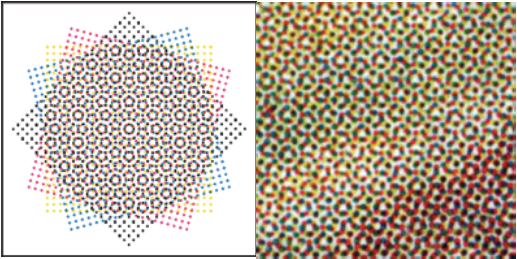Offset lithography (printing) works on a very simple principle: ink and water don’t mix. Images (words and art) are put on plates, which are dampened first by water, then ink. The ink adheres to the image area, the water to the non-image area. Then the image is transferred to a rubber blanket, and from the rubber blanket to paper. That’s why the process is called “offset” -- the image does not go directly to the paper from the plates as do other older processes such as letterpress or gravure.
If you look at your morning newpaper or a Sports Illustrated magazine, it is printed using this process. If it has color photos or type, it is printed using 4 “process” colors; cyan, magenta, yellow and black. Each color has its own plate and is printed on its own “unit” which can then have that color controlled to the amount of ink added to the plate. If you look really close at a picture in a magazine (you would probably need some sort of magnifying device) you will see something similar to the pictures shown here.

This is called a Rosette pattern and is made of dots in each of the 4 process colors. The dot in each ink color will vary in size depending on the color (green grass or blue sky) in the area you are looking at. So green grass will have a larger dot of blue and yellow and smaller dots of black and magenta and a blue sky will have a larger dot of the cyan and magenta and smaller dot of black and yellow. And then……the size of dots in those colors will vary depending how dark or light that color green or blue is. So, while this sounds like it is really difficult to do, computer technology and laser platesetters have all the intelligence that make it happen.


